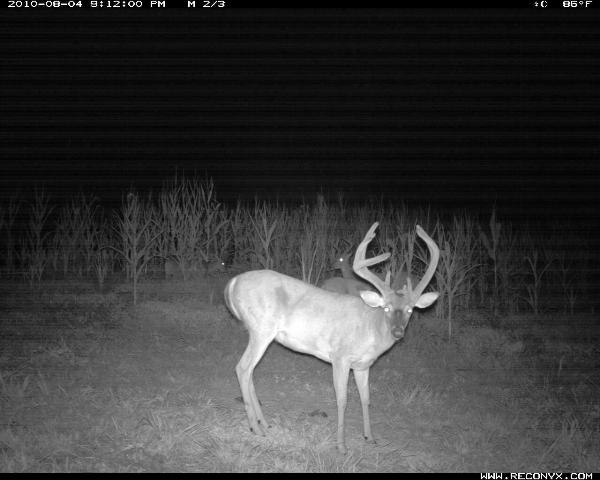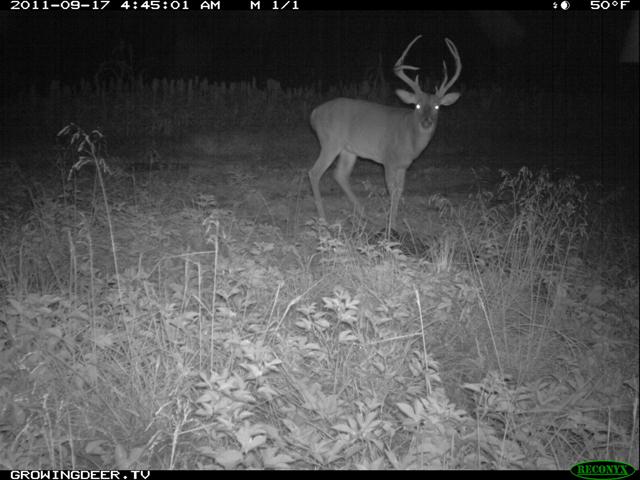Nocturnal Bucks
Filed under: Deer Hunting, Hunting Blog
There is a buck at my place I call Pitch Fork. His rack has been odd shaped for the last three years that I have been tracking him. Actually without genetic testing, it is never 100% certain that a buck with a similar rack is the same from one year to the next. However, I feel very confident that the buck I called Pitch Fork in 2009 is the same buck I called Pitch Fork in 2010 and 2011.
 Not only has his rack remained in the same basic configuration, but his behavior hasn’t changed. He’s extremely nocturnal. My Reconyx cameras have taken images of Pitch Fork at the same three locations (relatively close together) for three years. Every Reconyx image of Pitch Fork is at night – every single one. The closest I’ve come to seeing Pitch Fork was last spring, when we found one of his shed antlers during our 2011 Shed Hunt.
Not only has his rack remained in the same basic configuration, but his behavior hasn’t changed. He’s extremely nocturnal. My Reconyx cameras have taken images of Pitch Fork at the same three locations (relatively close together) for three years. Every Reconyx image of Pitch Fork is at night – every single one. The closest I’ve come to seeing Pitch Fork was last spring, when we found one of his shed antlers during our 2011 Shed Hunt.
Pitch Fork is a buck that is high on my hit list simply due to his age and my frustration factor with him. I believe I know his core area from the images, finding of a shed, etc. However, I’ve never seen this buck during daylight while hunting (or simply working the land).  It seems he only moves at night.
It seems he only moves at night.
I’ve known of several bucks through trail camera and GPS collar studies that seemed almost unkillable using legal methods. However, even the most nocturnal of these bucks will move sometime during the daylight.
Like many of you, I can’t hunt every day. So, as much as I enjoy a challenge, I focus my hunting effort on mature bucks that show more sign of moving during the daylight hours based on observations and images from my cameras. Although I focus my hunting effort on mature bucks that are captured on trail cameras more during daylight, I am vigilant for chinks in the armor of nocturnal bucks like Pitch Fork. This strategy has proven successful for me on several occasions
If you are a hunter that enjoys attempting to pattern and hunt for specific bucks, be careful of which bucks you place on your hit list. Nocturnal bucks like Pitch Fork can lead to years of frustration. However, studying bucks like Pitch Fork can make you a better hunter. Such bucks have very few holes in their predator survival plan. Pitch Fork has taught me many lessons during the past three years. I’ll find out how much I learned when I hunt him this year. I’ll let you know my grade later this season.
Growing (and hunting) Deer together,
Grant



